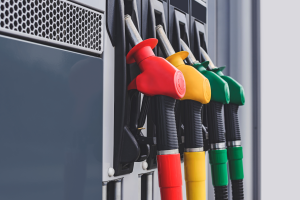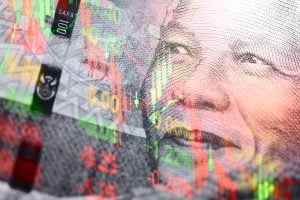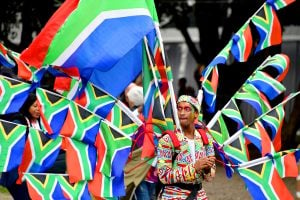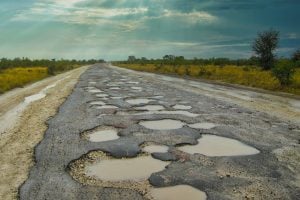South Africa vs new BRICS countries – GDP, population and wealth

While South Africa has been a part of BRICS since 2010, it has always been something of an outlier among its partners in the bloc.
The grouping has always touted its economic weight and representation – boasting that the bloc represents over 40% of the global population and almost 30% of global GDP.
However, South Africa’s contribution to this is tiny compared to the powerhouses of China, India, Russia and Brazil.
South Africa represents only 1.6% and 1.8% of the total GDP and population covered by the original five members (2022 figures).
In that sense, South Africa has always been punching far above its weight in the partnership – though not completely beyond all reason.
The southern tip of Africa has long held a strong position as the gateway into the rest of the continent.
Even though this position has shown signs of faltering in recent years, a stable and mature financial market, along with a strong constitution, tight regulations and relative political stability, still make it an appealing destination for multinational trade and business.
Add to that strong commodities and mineral resources that are in-demand world-wide, it’s easier to understand why South Africa found its place among the heavyweights in emerging markets.
With the BRICS bloc now extending an invitation to six more countries to officially join the partnership, South Africa’s position has gone from being at the bottom of the list in the grouping to more of a middling one.
South Africa is no longer the smallest economy in BRICS – but its positioning in the bloc isn’t exactly a showstopper.
According to World Bank GDP data (current US$) for 2022, South Africa’s GDP of $405 billion is only higher than that of Iran ($389 billion) and Ethiopia ($127 billion) – four new members punch higher. South Africa’s share of BRICS GDP has also dropped to 1.4%.
China remains the dominant GDP representative among the BRICS nations, accounting for 62% of the total GDP.
BRICS plus Six GDP
| # | BRICS member | GDP (US$m) | % BRICS | % Global* |
| 1 | China | 17 963 170 | 61.6% | 17.9% |
| 2 | India | 3 385 090 | 11.6% | 3.4% |
| 3 | Russia | 2 240 422 | 7.7% | 2.2% |
| 4 | Brazil | 1 920 095 | 6.6% | 1.9% |
| 5 | Saudi Arabia | 1 108 150 | 3.8% | 1.1% |
| 6 | Argentina | 632 770 | 2.2% | 0.6% |
| 7 | United Arab Emirates | 507 534 | 1.7% | 0.5% |
| 8 | Egypt | 476 747 | 1.6% | 0.5% |
| 9 | South Africa | 405 870 | 1.4% | 0.4% |
| 10 | Iran | 388 544 | 1.3% | 0.4% |
| 11 | Ethiopia | 126 783 | 0.4% | 0.1% |
| Total | 29 155 175 | 100% | 29% |
Similarly, South Africa’s population is also no longer the smallest served. This is now the United Arab Emirates, with a population of just over 9.4 million.
However, just as was the case with GDP, South Africa’s population coverage is still one of the smallest in the new bloc.
With an estimated 60 million people in 2022, South Africa’s population is only bigger than Argentina, Saudi Arabia and the UAE, with the other three new members coming in higher.
BRICS plus Six Population
| # | BRICS member | POP (N’000) | % BRICS | % Global* |
| 1 | India | 1 417 173 | 38.7% | 17.8% |
| 2 | China | 1 412 175 | 38.6% | 17.8% |
| 3 | Russia | 215 313 | 5.9% | 2.7% |
| 4 | Brazil | 143 556 | 3.9% | 1.8% |
| 5 | Saudi Arabia | 123 380 | 3.4% | 1.6% |
| 6 | Argentina | 110 990 | 3.0% | 1.4% |
| 7 | United Arab Emirates | 88 551 | 2.4% | 1.1% |
| 8 | Egypt | 59 894 | 1.6% | 0.8% |
| 9 | South Africa | 46 235 | 1.3% | 0.6% |
| 10 | Iran | 36 409 | 1.0% | 0.5% |
| 11 | Ethiopia | 9 441 | 0.3% | 0.1% |
| Total | 3 663 117 | 100% | 46% |
GDP and population aren’t a clear-cut indication of size, however – but expressed on a per capita basis, things become a bit clearer.
For example, while India has a massive population and far greater GDP contribution, it is actually the second “poorest” country in the bloc when that productivity is spread out.
South Africa, by comparison, is in a much better position using this metric, coming out in the middle of the new pool of countries.
Adjusted for purchasing power, the rankings remain mostly the same, with the exception of Iran moving ahead of South Africa and Brazil.
BRICS plus Six GDP per capita
| # | Country | GDP per Capita (US$) | GDP per Capita (PPP$)* |
| 1 | United Arab Emirates | 53 758 | 87 729 |
| 2 | Saudi Arabia | 30 436 | 59 065 |
| 3 | Russia | 15 345 | 36 484 |
| 4 | Argentina | 13 686 | 26 504 |
| 5 | China | 12 720 | 21 475 |
| 6 | Brazil | 8 918 | 17 821 |
| 7 | South Africa | 6 777 | 15 905 |
| 8 | Iran | 4 388 | 18 075 |
| 9 | Egypt | 4 295 | 15 091 |
| 10 | India | 2 338 | 8 379 |
| 11 | Ethiopia | 1 027 | 2 811 |


















